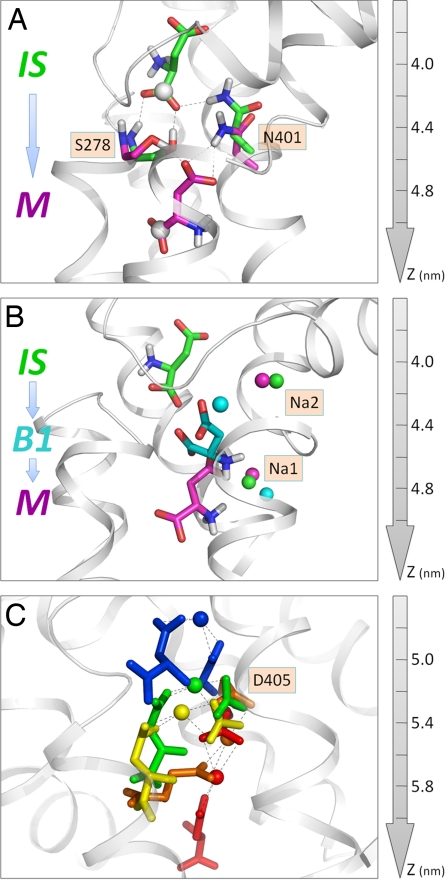Fig. 5.
Roles of (A) S278 and N401, (B) sodium ions, and (C) D405 in assisting the translocation of the substrate. (A) Two snapshots: the initial state (IS), and intermediate state (M). The backbone atoms of the substrate, S278 and N401 are colored green and magenta in the respective conformations. The α-COO− carbon atom of the substrate is displayed as a white sphere. (B) Three successive conformations (IS, B1, and M) of the substrate and accompanying displacements of the 2 sodium ions (colored green, cyan, and magenta in the respective conformations). Na2 temporarily approaches the substrate to assist in the passage over B1, and returns to its original position (binding site in the X-ray structure). Na1 starts to interact with aspartate in the M state (magenta) only, and remains coupled throughout the remainder of the trajectory, as also shown in C. (C) The ternary interactions between aspartate, D405, and Na1 in 5 successive snapshots, succeeding state M. Each snapshot is shown by a different color: blue, green, yellow, orange, and red, from top to bottom. The snapshots elucidate the conformational changes in D405 accompanying the translocation of the substrate and the coupling to Na1 as the aspartate moves toward the intracellular exit. Hydrogen bonds are shown by dotted lines.

